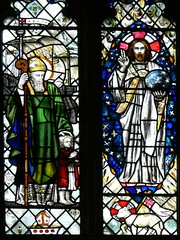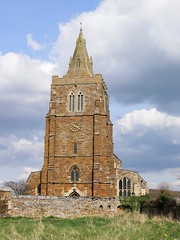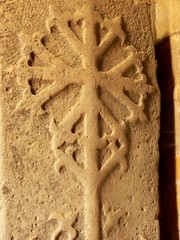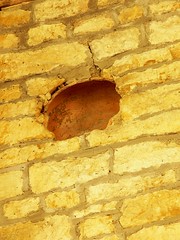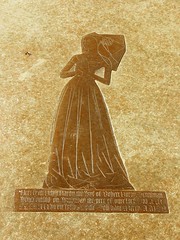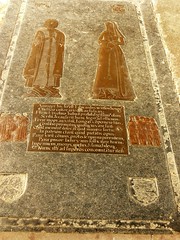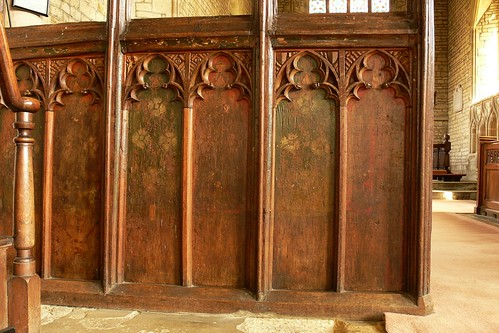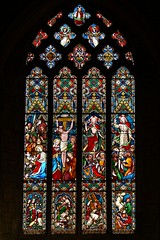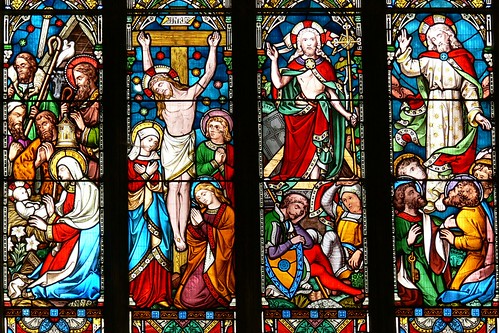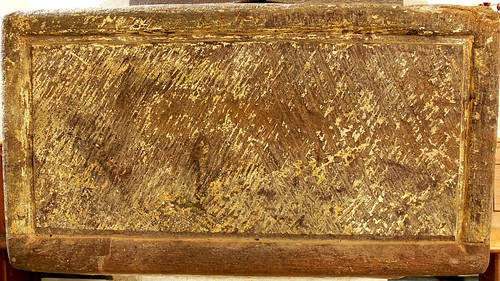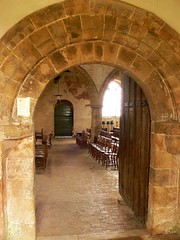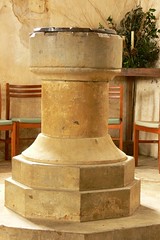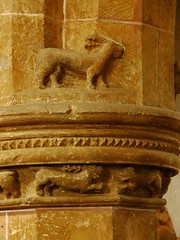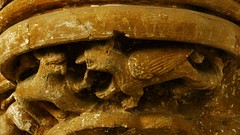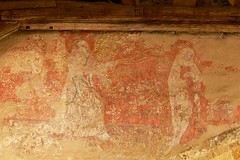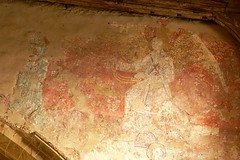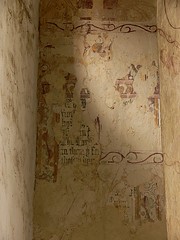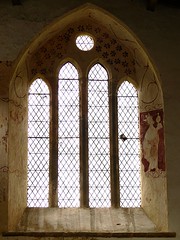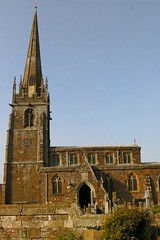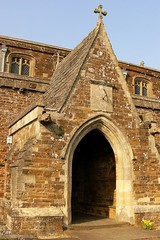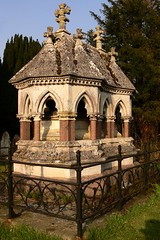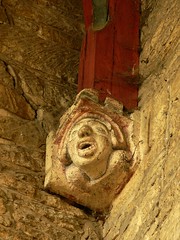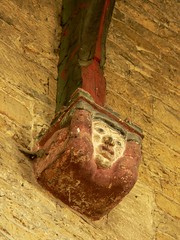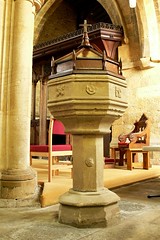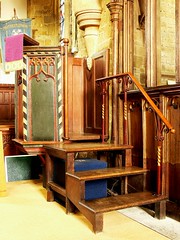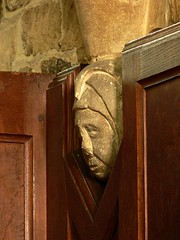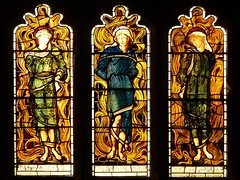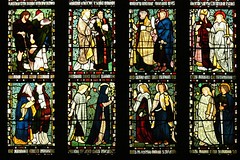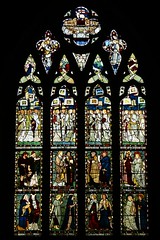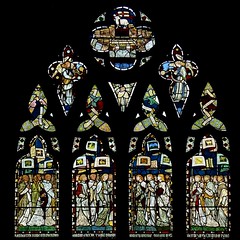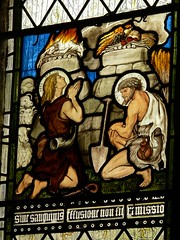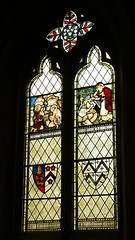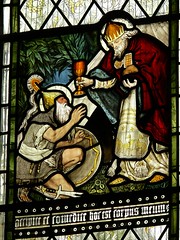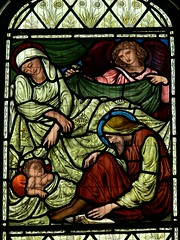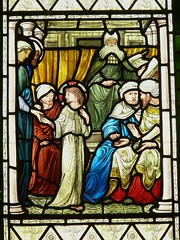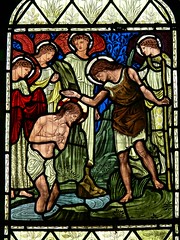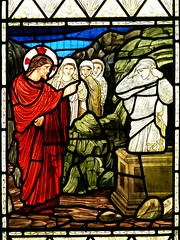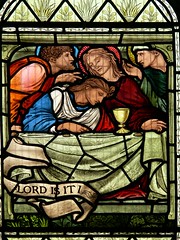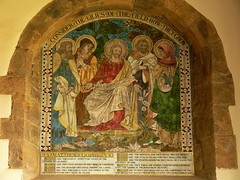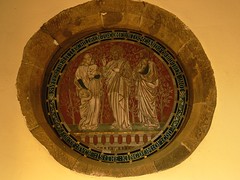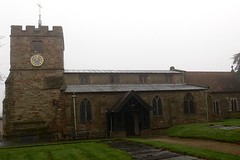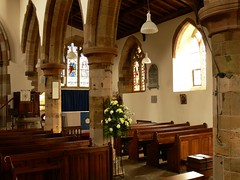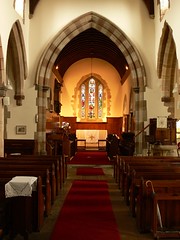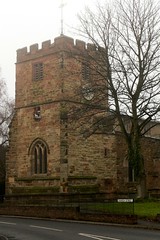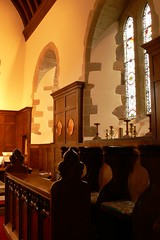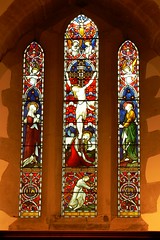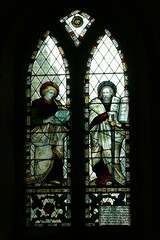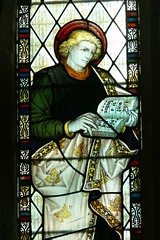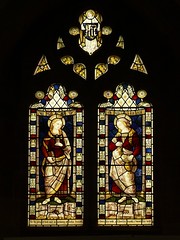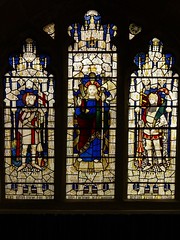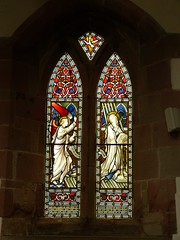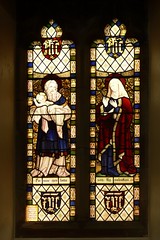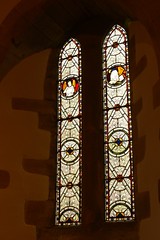Lyddington – St. Andrew.
The parish church of St. Andrew stands next to the Bede House which in 1602 housed 12 bedesmen (those employed to pray for the soul of their benefactor) and two women, all free of lunacy, leprosy or the French pox. The house itself is C15 and a former Palace of the Bishops of Lincoln.
St. Andrew is C14 and was rebuilt in C15 . Stylisticly it is Perpendicular with a Decorated tower.
Inside the west door there are two medieval stone coffin covers. The curch also has some rare acoustic jar made of clay that are inserted high up in the wall of the chancel.
The floor of the chancel has two brass monuments. The earliest is a 2ft 7in memorial to Helyn Hardy (d1486). She wears a veiled head-dress, mitten sleeves, belt and cordon, which was the habit of a widow who has taken vows of chastity.
Next to it is a memorial with two 3ft figures dedicated to Edward Watson (d1520) and his wife. Edward Watson was Surveyor-General to the Bishops of Lincoln, and his descendants became owners of Rockingham Castle.
Following the Reformations churches were permitted to place the altar at the east end of the church or, as the puritans preferred, in the centre of the chancel or nave.
In 1633 Archbishop Laud decreed that the altar should be at the east end and railed off from the chancel.
The altar rails at St Andrew are dated 1635 and surround the altar on all four sides – a compromise between the two factions.
The south wall of the chancel has a three seat sedilia and piscina. The C15 wooden chancel screen has painted flowers and traces of painted saints on lower panels.
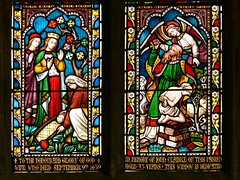
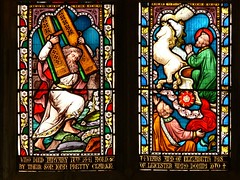
The east window is dated 1870 and is a memorial to John and Elizabeth Clarke. The central four panels have representations of the Nativity, Crucifixion, Resurrection, and Ascension. The lower panels are from the old testament.
The square font is made from the local ironstone and sits on a modern base. The font covering is Jacobean and early C17.
Tags: brass, rood screen, stained glass, tower






